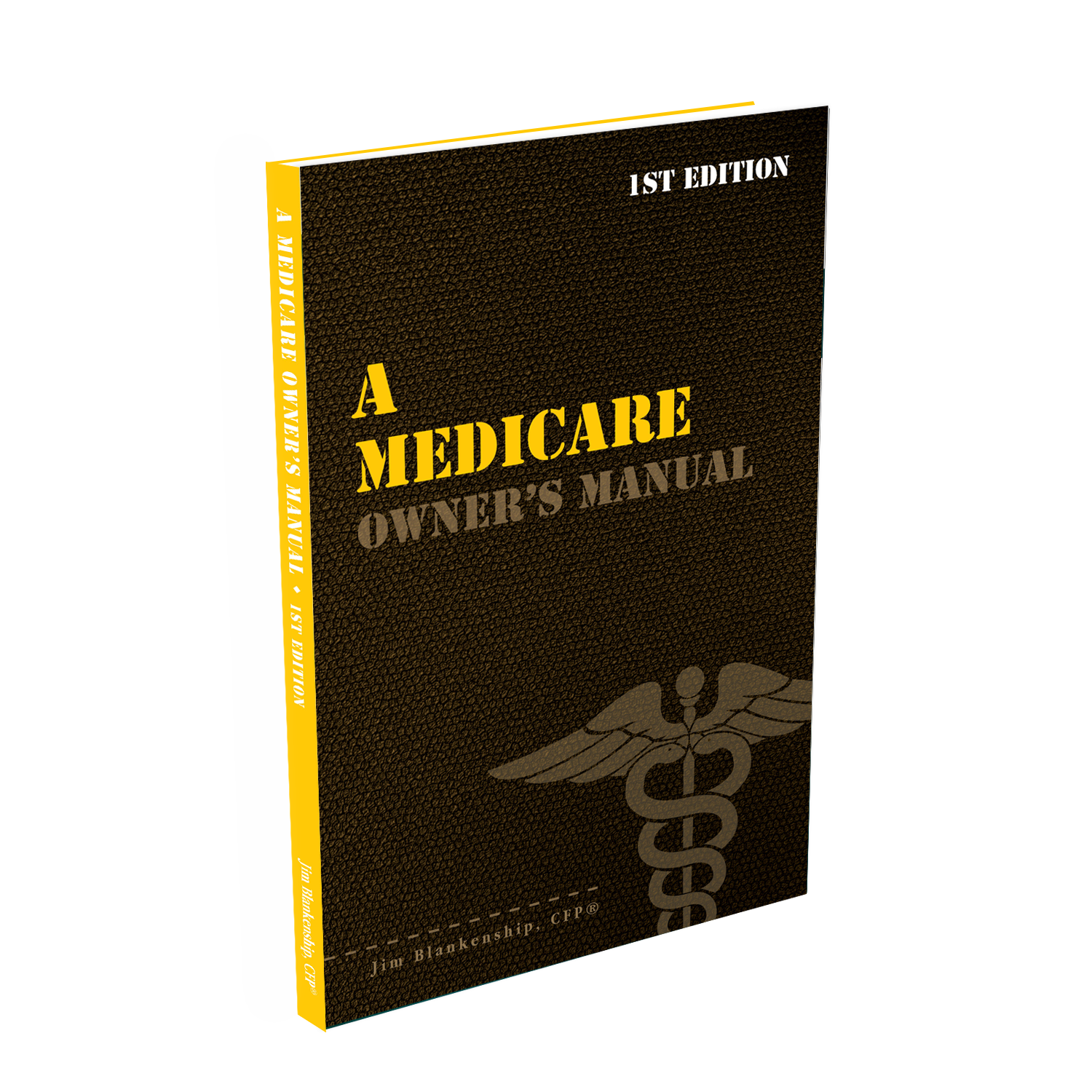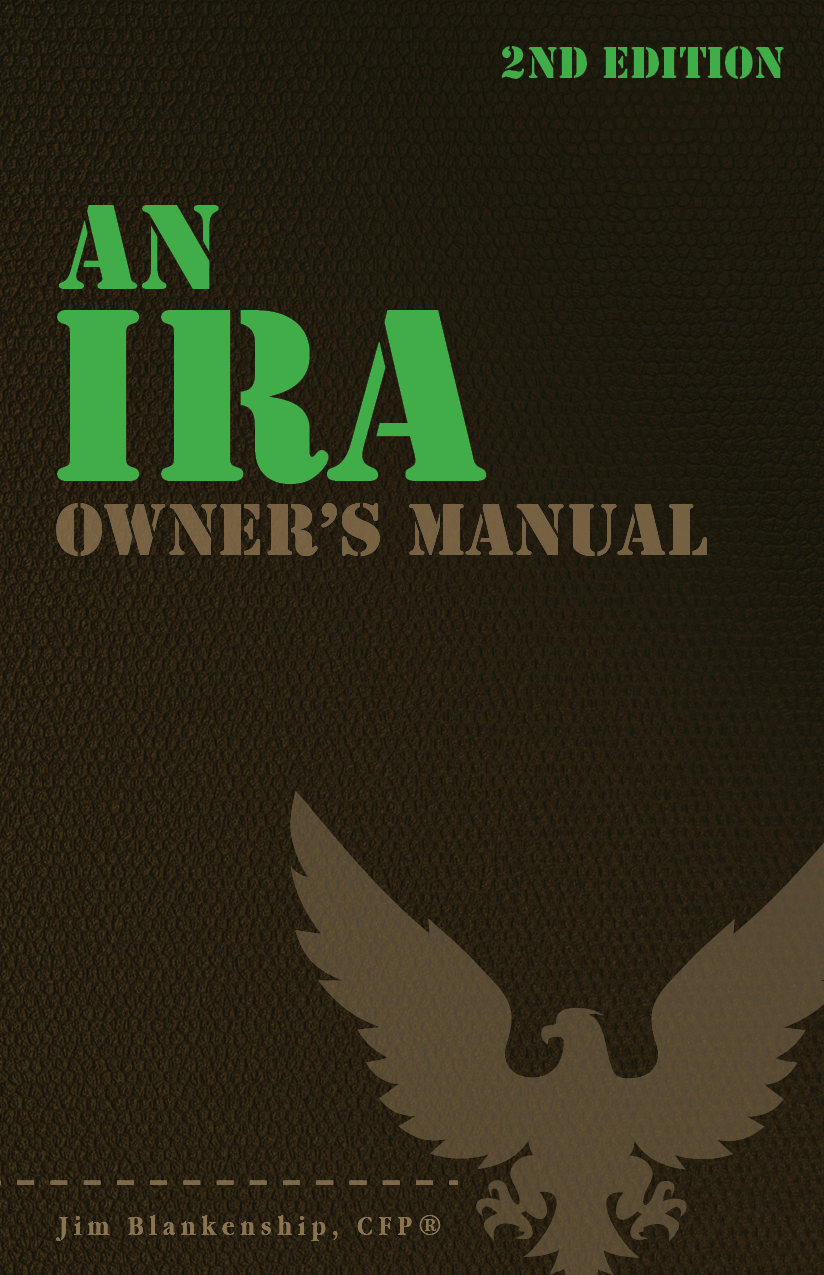When investing beyond an employer-sponsored retirement plan, you have a choice to make, between using an IRA, a Roth IRA, or a taxable, non-deferred investment account. In making this choice your primary consideration should be the tax implications. It’s easy to understand the current tax implications: if you invest in a traditional IRA and your contributions are deductible, you are saving the income tax of the deductible contribution. In all other choices, there is no current tax impact. For non-deductible contributions to a traditional IRA, or regular contributions to a Roth IRA, or saving in a taxable account, you are paying income tax as you’ve earned the money, regardless of what you do with it. The second area to consider tax implications on all of these types of accounts is when there is income produced from the investments within each type of account. Income produced includes capital gains from sales […]
IRA
Taking Distributions from Your IRA In Kind
When you take a distribution from your IRA, whether to put the funds in a taxable account or to convert it to a Roth IRA, you have the option of taking the distribution “in kind” or in cash. In cash means that you sell the holding in the account or simply take distribution of cash that already exists in the account. This is the most common method of taking distributions, and it is definitely the simplest way to go about receiving and dealing with a distribution. Cash is cash, it has only one value – therefore the tax owed on the distribution, whether a complete distribution or a conversion to a Roth account. On the other hand, if you choose to use the “in kind” option, you might just save some tax on the overall transaction. The reason this is true is due to the fact that the amount reported […]
Does Your IRA Include After-Tax Money?
Or: There’s Basis In Them Thar Funds! If you have an IRA that has certain types of funds in it, you may be in a position to have some of your distributions treated as post-tax, meaning that you will not have to pay ordinary income tax on the distribution as you normally would. But what kinds of money is considered post-tax? The common way to have post-tax funds in an IRA is to make non-deductible contributions to the account. This occurs when you are not eligible to make deductible contributions due to income restraints, but you still wish to make IRA contributions for the year. For example, if in 2012 you have income in excess of $112,000 ($68,000 if single) and you’re covered by a retirement plan at work, you can still contribute up to $5,000 (plus $1,000 if over age 50) to an IRA – you just can’t deduct […]
How to Keep Your Sanity When the World Around You Isn’t
In my current re-read of Benjamin Graham’s timeless book “The Intelligent Investor”, I ran across the following paragraph and was immediately struck by the simple, deep truth in the lines: But note this important fact: The true investor scarcely ever is forced to sell his shares, and at all other times he is free to disregard the current price quotation. He need pay attention to it and act upon it only to the extent that it suits his book, and not more. Thus the investor who permits himself to be stampeded or unduly worried by unjustified market declines in his holdings is perversely transforming his basic advantage into a basic disadvantage. That man would be better off if his stocks had no market quotation at all, for he would then be spared the mental anguish caused him by other persons’ mistakes of judgment. Jason Zweig, in his notes for the […]
The Roth 401(k) Plan
Many hard working Americans have access to a defined contribution retirement plan called a 401(k). Essentially, a 401(k) is a retirement savings vehicle provided by employers to their employees as a means for the employee to save for retirement, often with the employer providing a “match” of the employee’s contributions up to a certain percentage. As of January of 2006 (a result of EGTRRA 2001), employers can now offer employees the Roth 401(k) as part of their 401(k) plan. Before we get into the advantages of the Roth 401(k), let’s briefly look at how the regular 401(k) works. Employees that have access to a 401(k) are generally allowed to contribute up to $17,000 (2012 figures, indexed annually) per year to their 401(k). Employees aged 50 and over are allowed an additional $5,500 (again, 2012 figures, indexed annually). Employee salary deferrals are taken from the employee’s earnings on a pre-tax basis […]
Take Your RMDs From Your Smallest IRA
Here’s a strategy that you could use to simplify your life: when you’re subject to Required Minimum Distributions (RMDs) after age 70½, you have the option of taking separate RMDs from each IRA that you own OR you could take all of your RMDs from one account if you like. As long as you calculate your RMD based upon all of the IRAs that you own, you are free to take the full amount of all of your RMDs from one single account (or several accounts) if you wish. And keep in mind that the “I” in IRA stands for Individual – so you can’t aggregate your IRAs with your husband’s, for example. By doing so, you could eliminate the smaller account(s) if you wish, thereby reducing paperwork (fewer accounts and statements). As well, you don’t have to keep track of as many accounts for estate planning. But then again, […]
The Difference Between IRA Contributions and Rollovers
Often there is confusion about what constitutes a “contribution” and a “rollover” into an IRA. This post is intended to clear up the difference. While both activities are technically contributions, there’s a major difference between the two. The most significant of the differences is that with a regular annual contribution there are several limits imposed that can be quite restrictive. Annual Contribution Limits For an annual contribution to a traditional IRA or a Roth IRA, you are limited to the lesser of $5,000 or your actual earned income for the year. If you have no earned income, you’re not allowed to make an annual contribution to an IRA. Above that amount, if you happen to be 50 years old or better, you can add $1,000 more to your annual contribution (2012 figures). Astute readers will point out that there is the option for a spouse to make a spousal IRA […]
Tips for Summer Jobs From the IRS
With summer in full swing, many young folks are working in temporary jobs for the summer. There are a few things that you need to know about these temporary jobs that the IRS (and I!) would like you to know. Recently the IRS produced their Summertime Tax Tip 2012-13, which provides important information for students working in summer jobs. I have added an extra couple of tips after the original IRS text that may be useful to you as well. The original text of the Tip is below: A Lesson from the IRS for Students Starting a Summer Job School’s out, but the IRS has another lesson for students who will be starting summer jobs. Summer jobs represent an opportunity for students to learn about the tax system. Not all of the money they earn will be included in their paychecks because their employer must withhold taxes. Here are six […]
Guidance on Qualified Charitable Contributions From Your IRA For 2012
January 1, 2013 update: Passage of the American Taxpayer Relief Act of 2012 has extended the QCD through the end of 2013. See this article for more details. In past tax years (through the end of 2011) there was a provision available that allowed taxpayers who were at least age 70½ years of age to make distributions from their IRAs directly to a qualified charity, bypassing the need to include the distribution as income. The law allowed the taxpayer to use a distribution of this nature to satisfy Required Minimum Distributions (RMDs) where applicable. This law expired at the end of 2011, but in years past Congress has acted very late in the year and retroactively reinstated this provision. For more detail on how this provision (if not reinstated) can impact your taxes, see the article Charitable Contributions From Your IRA – 2012 and Beyond. Guidance For 2012 If you […]
IRS Cracking Down on IRA Rules
It seems that some of the rules the IRS has put in place with regard to IRAs have not always been watched very closely – and the IRS is stepping up efforts to resolve some of this. According to the article in the WSJ, IRA Rules Get Trickier, an estimated $286 million in penalties and fees were uncollected for 2006 and 2007 tax years’ missed distributions, over-contributions, and the like. The title of the article is a bit misleading, because the rules are not changing or getting “trickier”, the IRS is just going to be paying closer attention to what you’re doing with your account. This is set to begin by the end of this year, after the IRS delivers their report to the Treasury on how to go about enforcing the rules more closely. The first rule being monitored more closely is the contribution rule – for 2012, you’re […]
RMDs Don’t Have to Be Taken in Cash
But… It’s a little-known fact that distributions from an IRA or a Qualified Retirement Plan can be taken in kind, rather than in cash. You can in any circumstance take distribution from the account of stocks, bonds, or any investment that you own, just the same as if it were cash. The downside to this is determining valuation for the distribution. You could value the distribution on the day of the distribution by opening price, closing price, average price, or mean between the day’s high and low prices. Where you really get into trouble is when the security that you own is very thinly-traded, such as a small company or very infrequently-traded bonds. These can be very hard to value on the date of distribution, and as you might recall, the value of a distribution for Required Minimum Distributions (RMDs) must be valued appropriately in order to ensure that the […]
What Is Net Unrealized Appreciation?
We’ve discussed how to utilize the Net Unrealized Appreciation (NUA) treatment of distributions from your qualified retirement plan (also known as QRP, meaning 401(k), 403(b), and other plans) – one of the earlier articles on Net Unrealized Appreciation can be found at this link. Even though the process is explained in the earlier article, we didn’t discuss just what exactly can be treated with the NUA option. How do you determine what part of the distribution can be treated with capital gains treatment? In order to determine what is to be treated as unrealized appreciation, we need to define what has to be treated as ordinary income from such a distribution. Briefly, the way that the NUA option works is that you take a complete distribution of your QRP account within one tax year – and you have the option to treat a portion of your account distribution with capital […]
Investing Truths
This list of factors about investing is part of a document that I often provide to my clients as we’re working with investment planning. The list isn’t intended to be exhaustive, but rather representative of some of the truisms that I have found to be helpful over the years. Add your own truisms to the list and I’ll put this up as a separate page to include your comments as well! Investing Success Factors Time is the most important factor relating to an investment plan’s success. There is no substitute for starting early and maintaining regular contributions to your savings. Diversification, among asset classes, sectors, and tax treatment, is the second-most important factor relating to an investment plan’s success. The old adage “Don’t put all of your eggs in one basket” applies here. Keeping expenses down, by utilizing low-cost investment vehicles such as no-load mutual funds and exchange-traded funds, is […]
What If My Employer Doesn’t Match My 401(k) Contributions?
Should I continue to make contributions to my 401(k)? Is there something else that I should make contributions to instead? As you may recall, the recommended order for retirement savings contributions is normally as follows: 401(k) contributions up to the amount that the company matches max out your Roth or traditional IRA contributions for the year (as applicable) max out the remainder of the available 401(k) contributions make taxable investment contributions In the situation where your employer doesn’t match your contributions to a 401(k) plan, the order of contributions is more appropriate if you bump up the Roth or traditional IRA contributions. In other words, just eliminate the first bulletpoint. Now, the choice of Roth IRA versus the traditional IRA for your contributions is dependent upon your income and the tax impacts. For example, you would not be eligible to make a deductible traditional IRA contribution if your Modified Adjusted […]
Ideal Roth Conversion Candidate – Protecting Non-Taxation of SS Benefits
This is the second in a series of posts about Ideal Roth Conversion Candidates. See the first post, Low or Zero Tax, at this link. One of the planning options that most all folks have available to them is the Roth IRA Conversion. For the uninitiated, a Roth IRA Conversion is a transaction where you move money from a Traditional IRA or a Qualified Retirement Plan (QRP) such as a 401(k) into a Roth IRA. With this transaction, if any of the funds in the original account was pre-tax, that amount would be included in income as potentially taxable in the year of the Conversion. As you might expect, making a decision like this can result in a considerable tax impact, depending on the individual circumstances. A Roth IRA Conversion may make a great deal of sense for one individual, while another may decide that the Conversion cost is too […]
Ideal Roth Conversion Candidate – Low or No Tax
One of the planning options that most all folks have available to them is the Roth IRA Conversion. For the uninitiated, a Roth IRA Conversion is a transaction where you move money from a Traditional IRA or a Qualified Retirement Plan (QRP) such as a 401(k) into a Roth IRA. With this transaction, if any of the funds in the original account was pre-tax, that amount would be included in income as potentially taxable in the year of the Conversion. As you might expect, making a decision like this can result in a considerable tax impact, depending on the individual circumstances. A Roth IRA Conversion may make a great deal of sense for one individual, while another may decide that the Conversion cost is too great for the result. Detailed below is one specific circumstance that indicates a Roth IRA Conversion is a good move – although each individual needs […]
What is Meant by Half Years of Age?
If you’ve paid much attention to the rules around retirement plans (IRAs, 401(k)s, and others), you’ve probably noticed that there are a couple of rules that refer to ages that include “½”. So what does this mean?? Well, quite literally, this means 6 months after you reach a certain age. The two primary ages with “½” included are 59½ and 70½. So, to be age 59½, means that you reached your 59th birthday six months prior to that date. Likewise, to be age 70½ means that you reached age 70 six months prior to that date. These two ages are for different purposes and are (naturally) treated differently. Age 59½ The rule using age 59½ is for one of the exceptions to the penalty for early withdrawals from your IRA or 401(k) plan: once you’ve reached that age (and not before that age) you can take withdrawals from your IRA […]
Inherited IRA Multiple Beneficiary Example
I thought it might be helpful to work through an example of an IRA that has been inherited by multiple beneficiaries, so that we can discuss the important components of working with such a situation. In our example, we’ll say there is an IRA worth $800,000 at the date of death of the original owner, and she has designated four beneficiaries of the account. One of the first factors that is important to note is that the beneficiaries could be anyone – they do not have to be related to the original owner, or likewise they could be the children, grandchildren, nieces, nephews, brothers or sisters of the original owner. For the purpose of this example though, none of the beneficiaries is the surviving spouse of the original owner – surviving spouses have different rules to work from. Option 1 – Do Nothing The beneficiaries of the original account could […]
What Options Are Available for a Surviving Spouse Who Inherits an IRA?
First Spouse Program bronze medal (Photo credit: Wikipedia) When the owner of an IRA dies and leaves the IRA to his or her spouse as the sole beneficiary, there are some unique options available for handling this inherited IRA. Keep in mind that these options are only available to a spouse a beneficiary – a non-spouse beneficiary has much more limited options available. Options for a Spousal Beneficiary of an IRA The first and easiest option is for the spouse to leave the IRA exactly where it is and do nothing. In this manner, the IRA will continue to exist as belonging to the deceased spouse – for a time. If the deceased spouse was over age 70½ years of age and subject to Required Minimum Distributions (RMDs), the surviving spouse could elect to continue receiving those RMDs using his or her late spouse’s lifetime as the distribution factor. On […]
When Is a Roth IRA Subject to Income Tax?
Elaine Roth (Photo credit: Wikipedia) Ah, the Roth IRA. That single bastion of non-taxable money in our arsenal of accounts. When you have investments in a Roth IRA, you can take the money out tax-free, right? Not always. There are several situations where a Roth IRA’s monies can be subjected to tax, penalty, or both. Listed below are some of those circumstances. When a Roth IRA is Taxable It should be noted that contributions to a Roth IRA may always be withdrawn from the account tax-free, for any purpose whatsoever. There are no restrictions on these withdrawals. 1. Taking the money out of the account within the first five years of the account’s existence can result in taxation of a portion of the funds. The portion that is taxable is any withdrawal that exceeds the total of all contributions and conversions into the account. This rule applies without exceptions. 2. […]


 Sterling Raskie, MSFS, CFP®, ChFC®
Sterling Raskie, MSFS, CFP®, ChFC® The latest in our Owner’s Manual series, A 401(k) Owner’s Manual, was published in January 2020 and is available on
The latest in our Owner’s Manual series, A 401(k) Owner’s Manual, was published in January 2020 and is available on  A Medicare Owner’s Manual, is updated with 2020 facts and figures. This manual is available on
A Medicare Owner’s Manual, is updated with 2020 facts and figures. This manual is available on  Social Security for the Suddenly Single can be found on Amazon at
Social Security for the Suddenly Single can be found on Amazon at  Sterling’s first book, Lose Weight Save Money, can be
Sterling’s first book, Lose Weight Save Money, can be  An IRA Owner’s Manual, 2nd Edition is available for purchase on Amazon. Click the link to choose the
An IRA Owner’s Manual, 2nd Edition is available for purchase on Amazon. Click the link to choose the  Jim’s book – A Social Security Owner’s Manual, is now available on Amazon. Click this link for the
Jim’s book – A Social Security Owner’s Manual, is now available on Amazon. Click this link for the  And if you’ve come here to learn about queuing waterfowl, I apologize for the confusion. You may want to discuss your question with Lester, my loyal watchduck and self-proclaimed “advisor’s advisor”.
And if you’ve come here to learn about queuing waterfowl, I apologize for the confusion. You may want to discuss your question with Lester, my loyal watchduck and self-proclaimed “advisor’s advisor”.